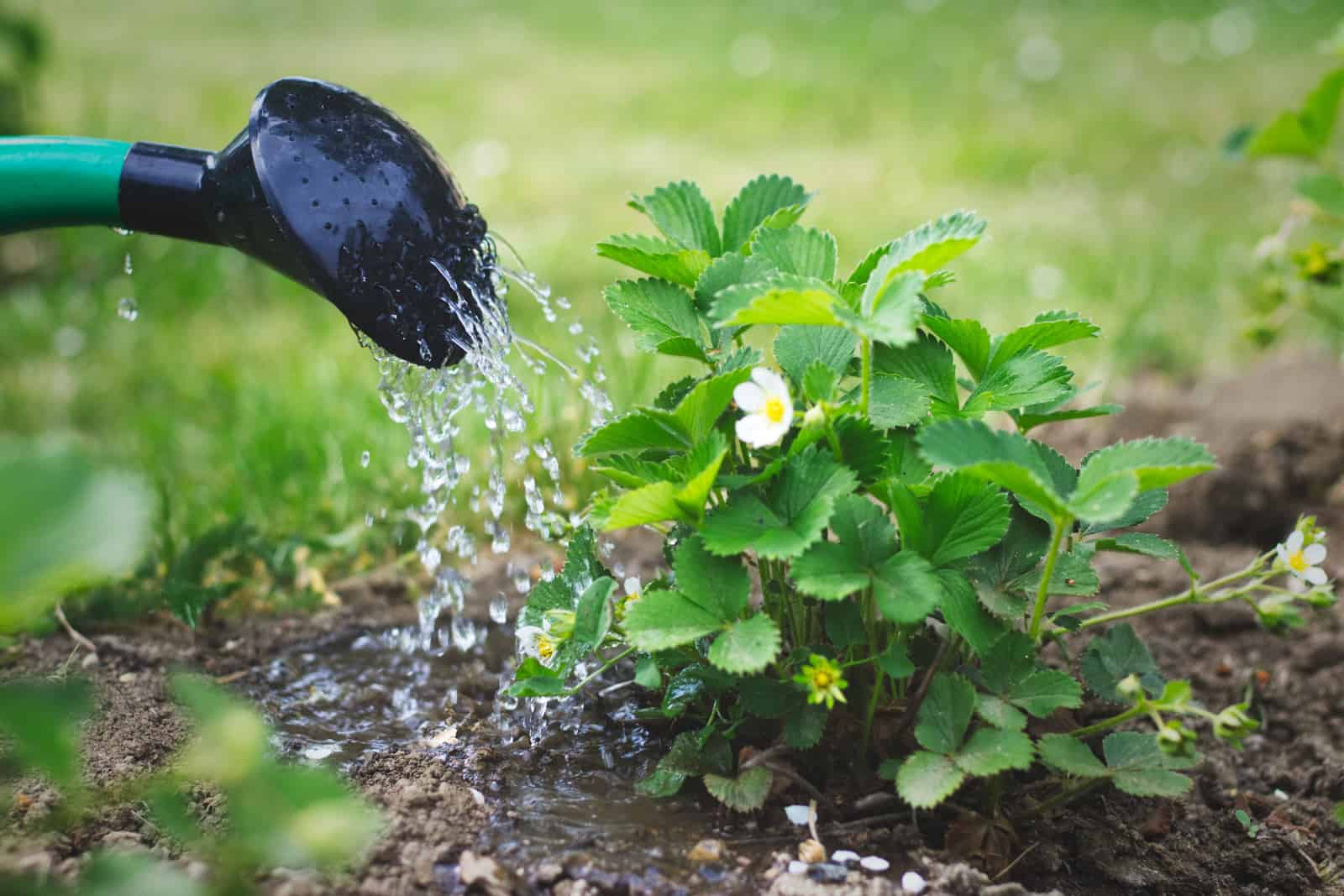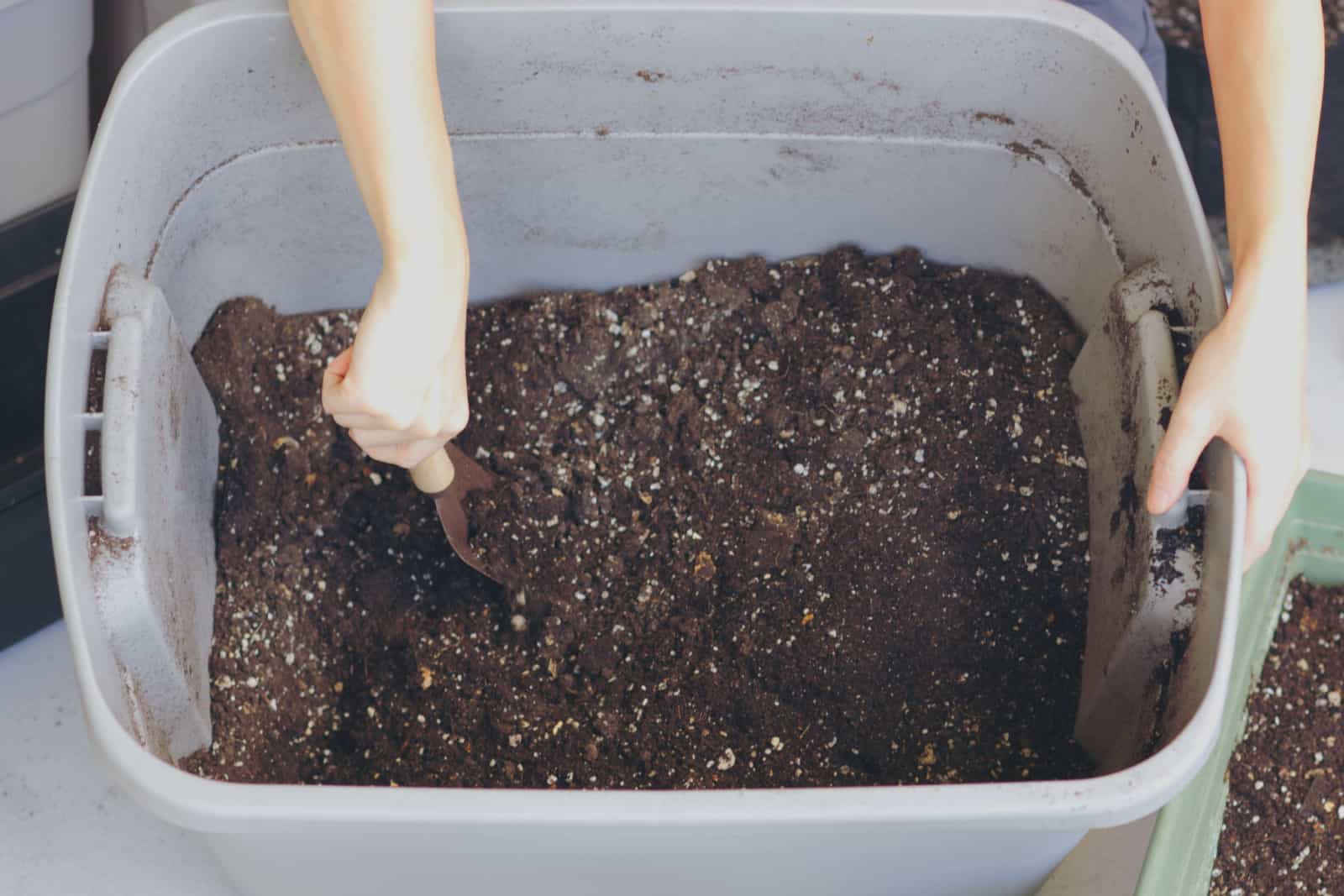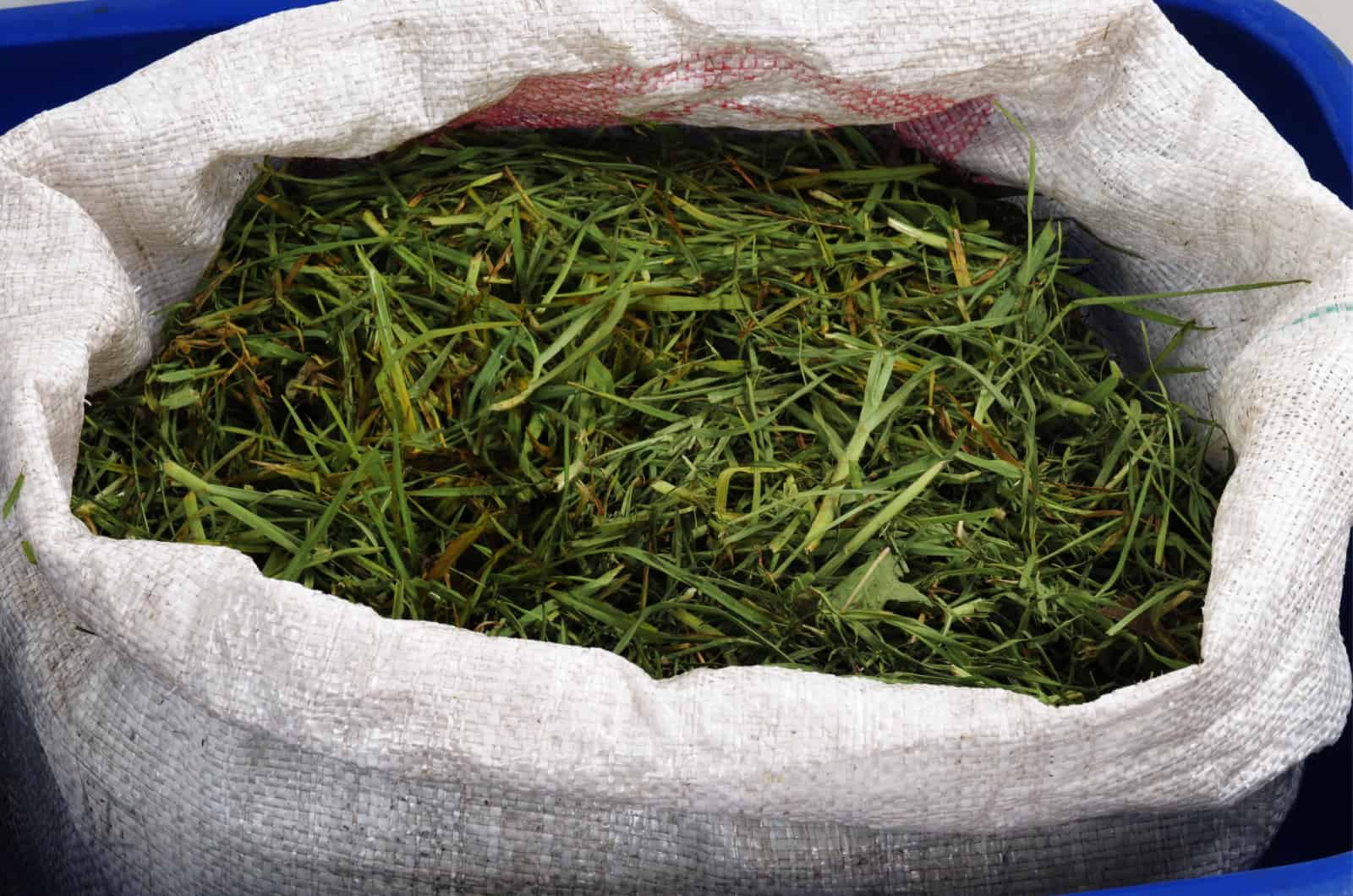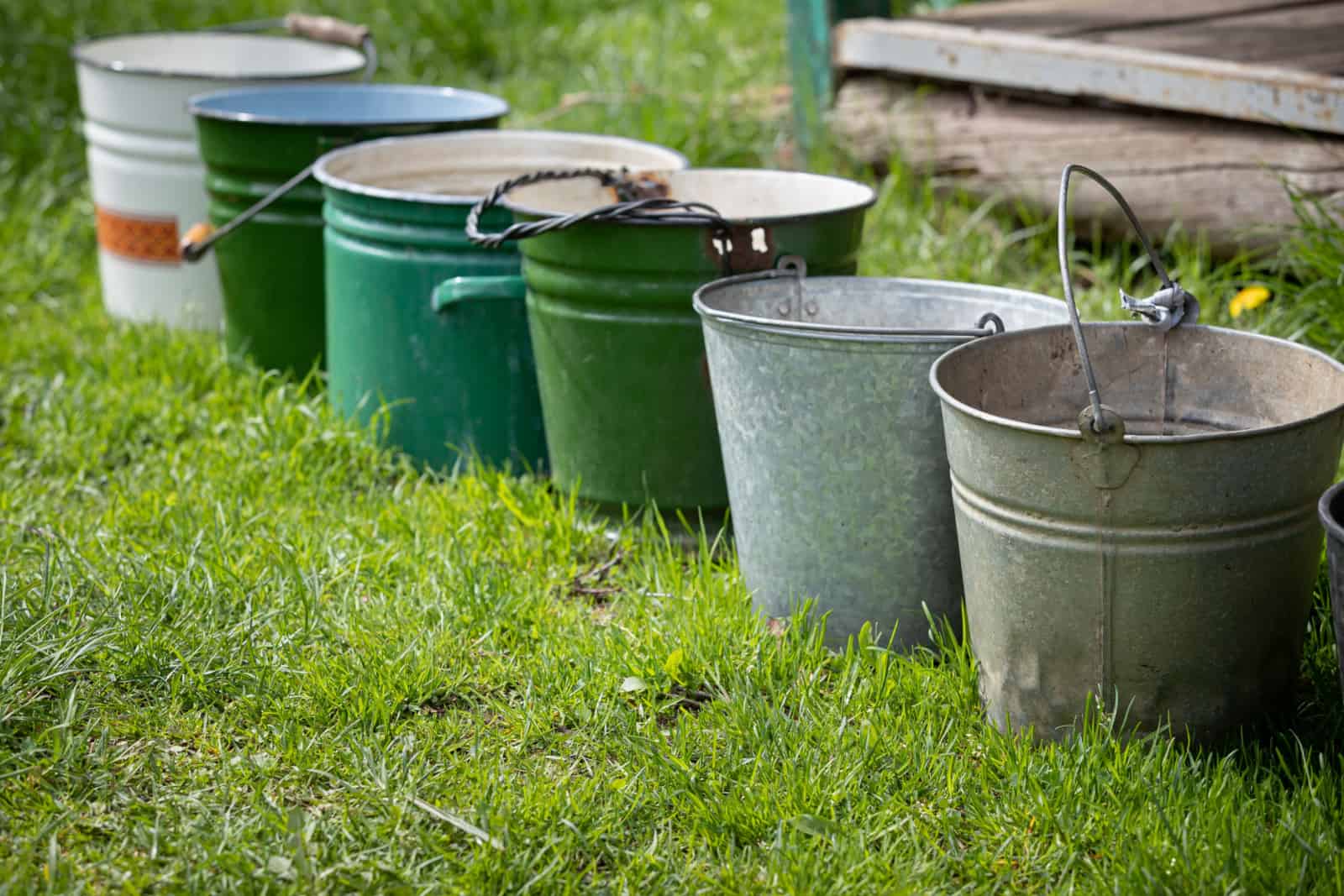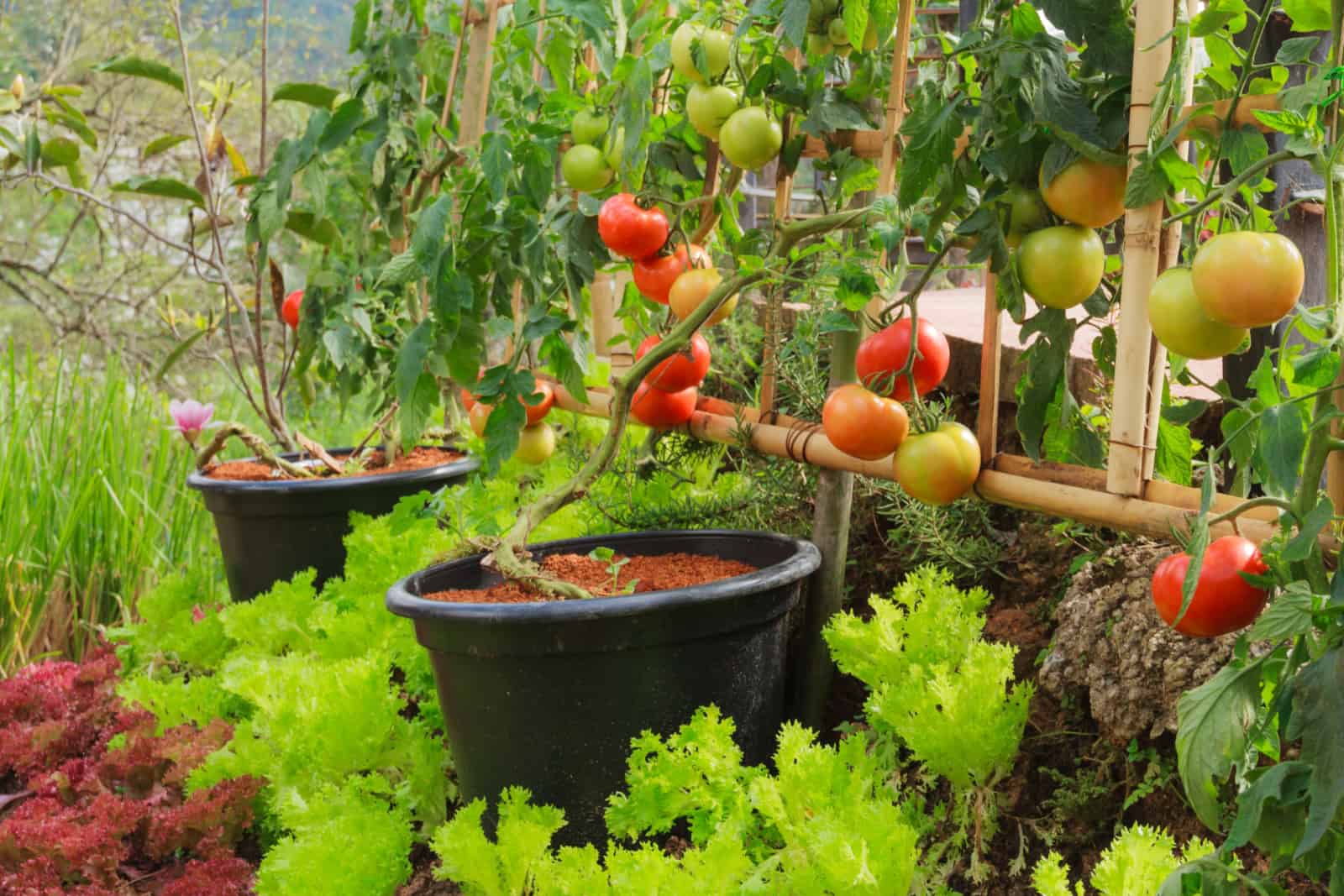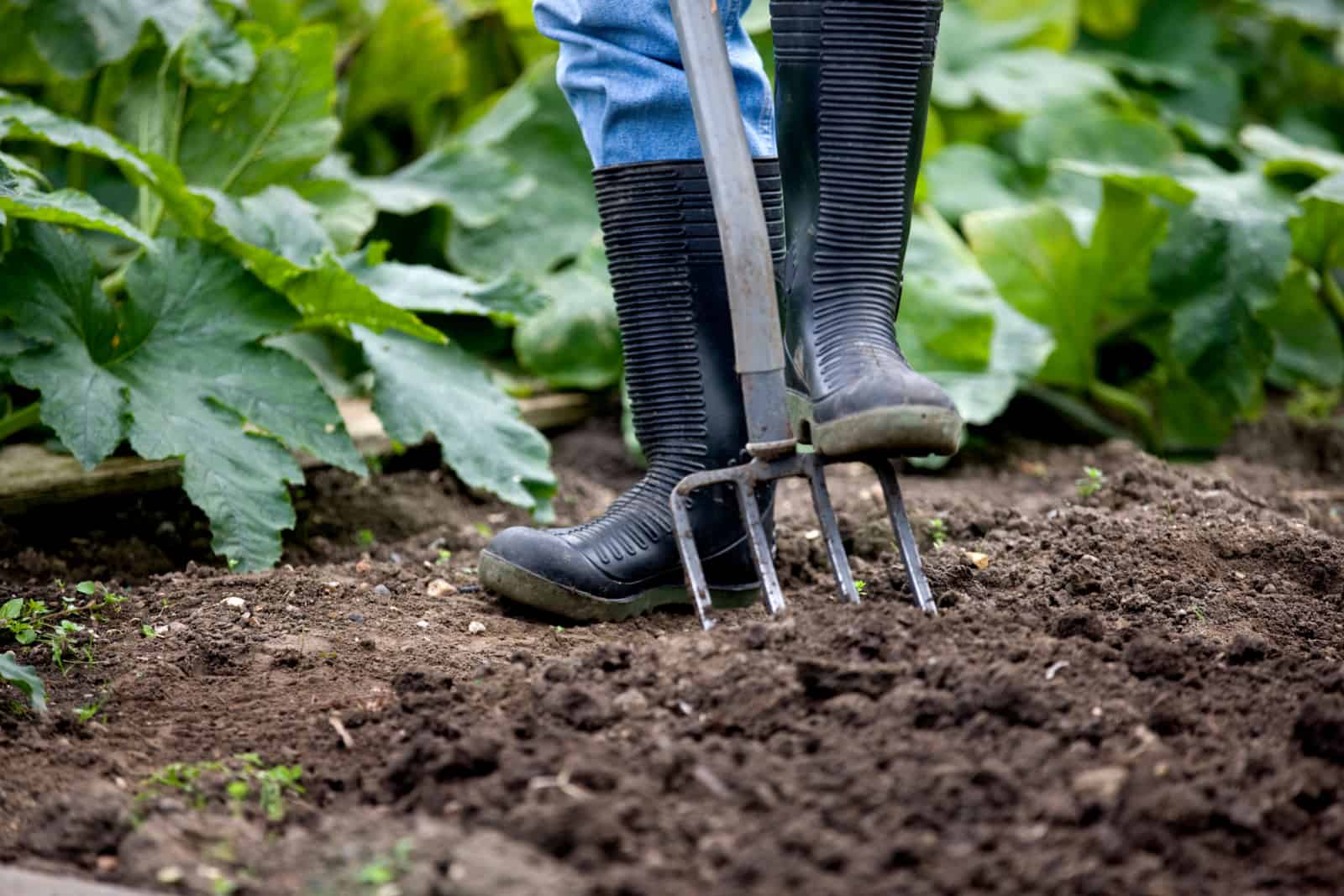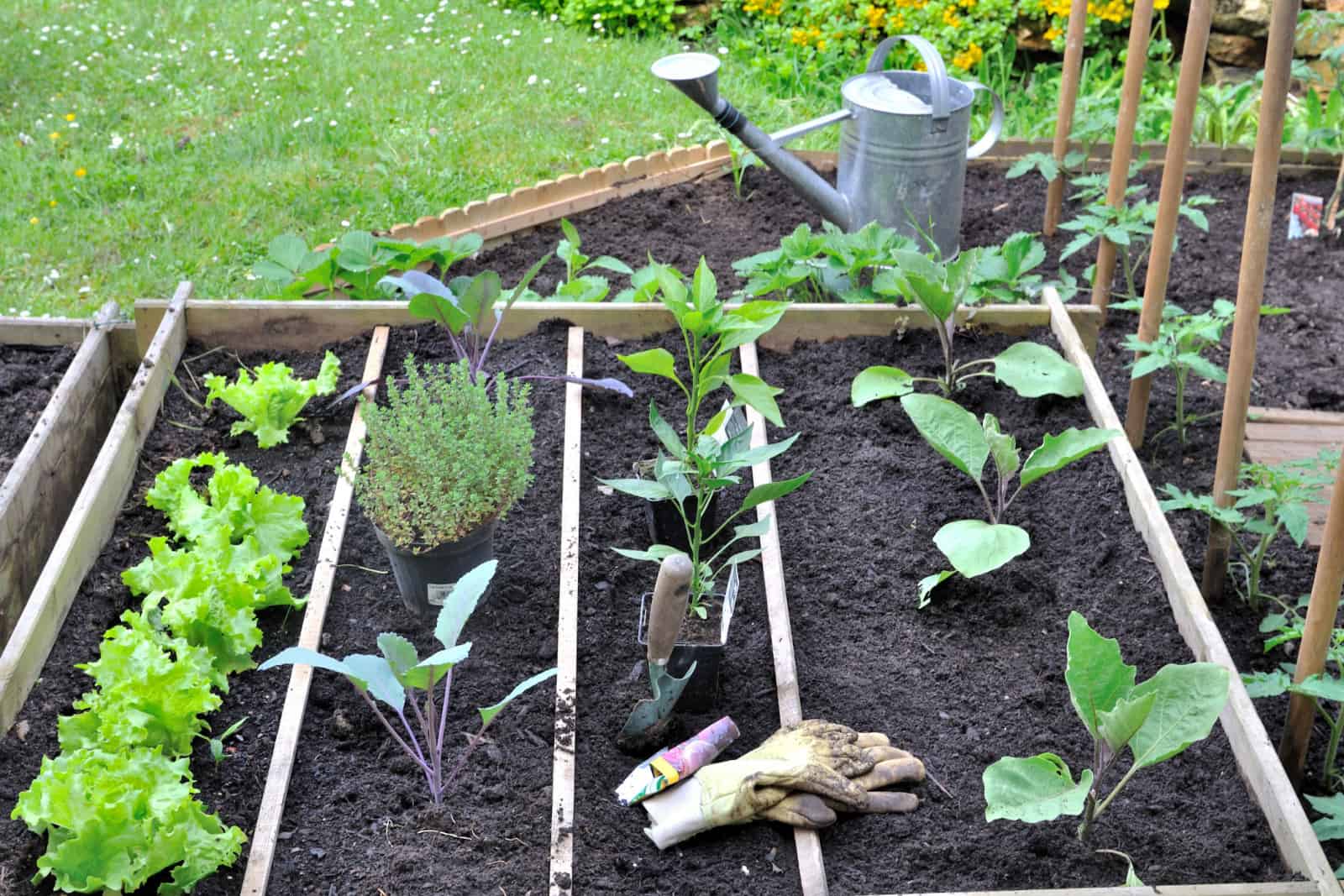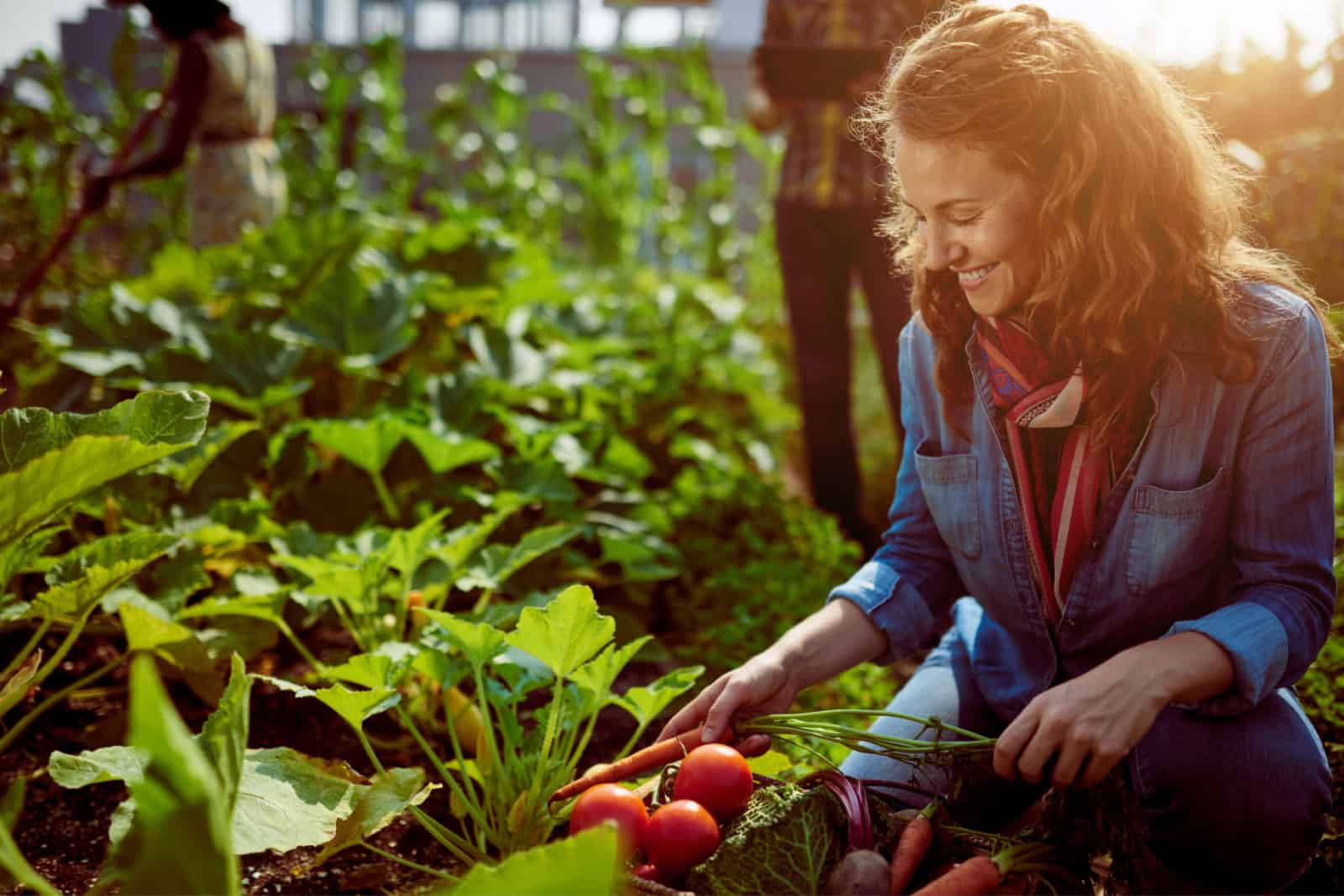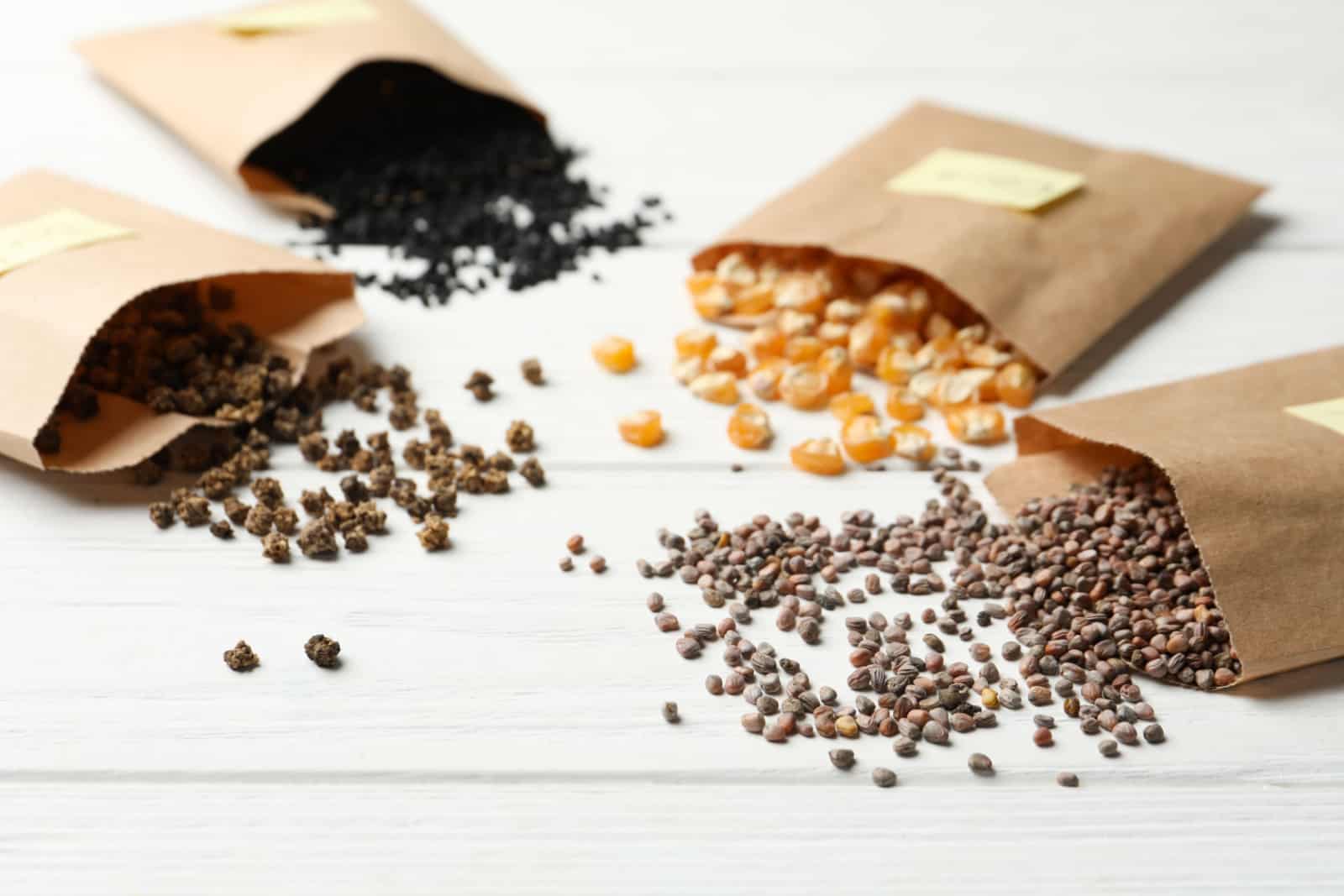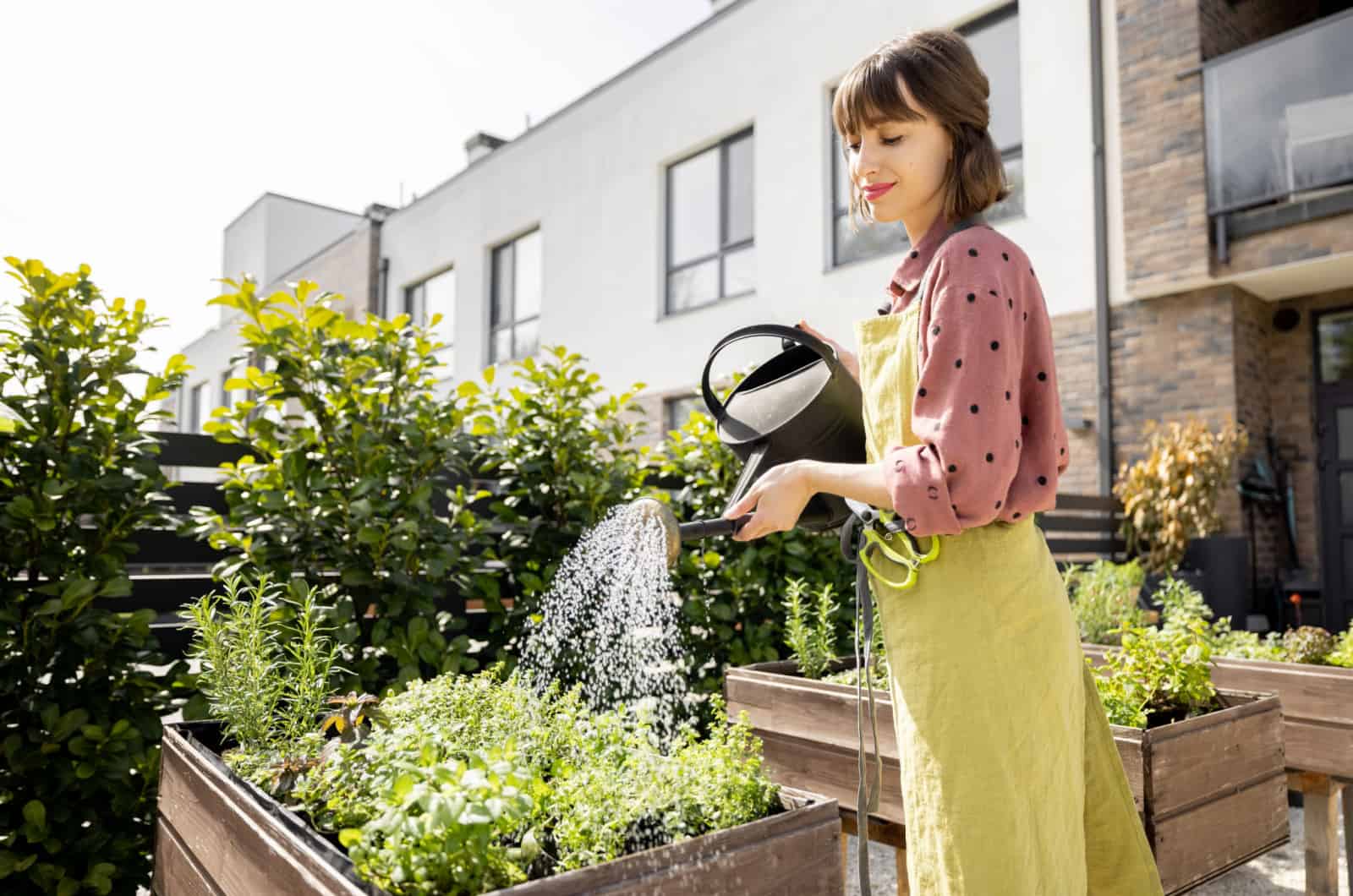What if I told you that you can have a veggie garden without spending a dime? It may sound like an impossible dream since this type of gardening requires seeds, soil, plant food, and many other things that can be pretty pricey.
Luckily, you can get fresh and completely organic vegetables, and it only requires a little creativity and dedication.
I’m here to help you start a vegetable garden for free; simply follow these tried and true tips, and your veggie garden will be thriving in no time!
What You Already Have
You probably think you have nothing to start off with, but just look around and observe. Yes, that’s my first tip! You have the sun as well as air, water, and soil. You only need to get a plant to begin.
Patience is the key term in this entire process. Mother nature will take care of many things, but you also need to assist her.
To start with, you need to consider how to make the soil fertile for your plants so they have all the nutrients they need.
To avoid purchasing expensive fertilizers, try making your own. This isn’t only a job for experienced gardeners because it doesn’t include any special skills.
Let’s take a look at how to make the soil more fertile so your veggies are healthy and thrive.
Always Compost
This is definitely the best advice you can get when it comes to gardening. Instead of throwing away biodegradable materials, you simply add everything to your compost pile. This process will save nutrients and your plants will highly benefit from it.
I would now like to share 5 brilliant tips on how to start the composting process.
1. If you have free outdoor space, consider placing your compost in an easy-to-access corner. The major benefit of this method is that you don’t need to put much effort into making compost storage.
However, the drawback of this technique is that it looks pretty unattractive.
2. Let’s make things prettier. You can make storage for your compost using garbage cans, wooden pallets, or barrels. You can paint these types of containers so that they match your garden design.
3. If you don’t have any outdoor space available, you can also compost on a smaller scale. For instance, you can use small buckets or old food containers for all your kitchen scraps. Your veggies will appreciate it.
4. You can request a composter in your local area if your council has that option.
5. Try in-place composting. This method refers to adding all the ingredients directly to the soil.
Compost is undoubtedly the best nutrient booster for home gardens. However, there are other methods and ingredients you can use to increase nutrient levels.
The time needed for making compost depends on the materials, size, and container type, so just be patient.
Other Nutrient Boosters
Let’s look at 4 ways to make zero-cost fertilizer.
1. Grass clippings: Instead of throwing grass clippings away, collect them and use them as mulch. This will prevent weed growth and is rich in nutrients, so it’s a win-win situation.
2. Leaf mold: Collecting leaves in the fall can be exhausting, but things get better if you start using them for your prized plants.
3. Weed tea: There’s nothing I hate more than weeds. The good thing is that you can make tea and fertilize your veggies. Simply add weeds to a bucket, pour water over them, and use the result after 2 weeks.
4. Coffee grounds: Since they have high nitrogen content, coffee grounds make excellent fertilizer for many veggies.
Collect Rainwater
Irrigation is the most important part of plant care. If you live in an area that faces drought during the hot summer months, consider collecting rainwater.
I recommend this method for all your plants, not just veggies. My fellow gardeners often ask me if rainwater is good for plants and my answer is yes.
Water bills won’t increase and you’ll have healthy, delicious veggies. Trees, plants, soil, basins, and ponds are all natural rainwater collectors.
We have to figure out ways to collect more rainwater. Here are my suggestions.
1. Make a basin or pond in your garden if possible. This method works for large properties, but if you don’t want it to ruin the appearance of your outdoor space, there are other ways to collect water.
2. Collect water from roofs. Simply install reclaimed pipes and barrels near any building on your property.
3. Place buckets all over your property during rain. This is my favorite method; I put a lot of buckets in my yard before expected rain, and pour the water in a large reclaimed barrel.
Another way to save water is to enrich the soil with water-retaining materials and organic matter.
Create A Resilient Garden
Your garden needs to be pest and disease free if you want your vegetables to develop healthily. Therefore, you need to find a way to control these issues.
For instance, attracting beneficial insects such as ladybugs or braconid wasps can help you control pests and avoid infestations.
You also need to keep your garden clean all the time and inspect your plants regularly. If there are any diseases, you can control them and prevent them from spreading if you catch them early enough.
Consider adding flowering plants to your veggie garden to attract pollinators.
Companion planting is an excellent way to repel pests, attract pollinators, and improve soil quality.
Tools You’ll Need
When I was starting my first outdoor garden, I looked for tools in local plant stores and online. However, they were way over my budget so I needed alternatives. Luckily, I had some friends who were into gardening and they gave me an excellent tip: employ the no-dig technique.
This is an excellent method for beginners not only to avoid spending money, but also to avoid digging, which can be exhausting and tricky.
When fall approaches, add a layer of compost to the selected site. You can prevent weed growth by adding a layer of straw in the spring before planting.
All you need to do is spread the seeds on the surface layer. If growing root veggies such as potatoes, lay them on the surface layer and cover them with compost and straw.
If this sounds too complicated, purchase a couple of low-cost tools such as a garden fork, a spade, and a pair of garden shears. Nowadays, these tools aren’t too expensive and are often on sale when the growing season ends.
You can also check yard sales or ask friends and family if they have any spare.
Garden community groups are very popular nowadays and if you want to become a seasoned gardener, I highly recommend joining these groups if you can.
Start A Vegetable Patch
Now that you know how to boost nutrient levels in the soil and have prepared tools, it’s time to select a site.
Here are a few factors to consider prior to making a veggie patch.
1. Choose a site with high-quality soil and good sun exposure. It would be great if you had a site that has both a sunny and a shady part. This gives you the opportunity to grow more types of veggies.
2. Make sure the veggie patch is easy to access.
3. If you have a compost pile, select a site near it to ease transportation.
You can choose to plant your veggies in-ground, or make lasagna or raised beds. Let’s find out more about these options.
Growing Veggies At Ground Level
If you have nutrient-rich soil, there is no need to prepare it. What does that mean? Well, you don’t need to add a layer of organic matter because the soil already has everything your veggies need.
On the other hand, if the soil is poor and lacks vital nutrients, you’ll need to enrich it. You can use cover crops or green manure to boost the nutrient levels prior to planting.
You’ve seen how to make compost and other nutrient boosters, so this part shouldn’t be a problem.
Your costs are still $0.
Make Lasagna Beds
No, this isn’t about pasta, bolognese, or bechamel sauce! This is a gardening technique that involves making layers of different materials to ensure more nutrients for our veggies.
Here are 5 steps for creating lasagna beds in your home garden:
1. Clear the site: Remove everything from the site, including grass, weeds, and debris.
2. Add a layer of cardboard: You need to add carbon to the soil and the best way to do that is by covering the site with cardboard. This will also prevent weed and grass development.
3. Add a layer of brown materials: The next step in creating a lasagna bed is to cover the cardboard with brown materials such as shredded paper and card, dead leaves, wood chips, and straw.
4. Add a layer of green materials: Kitchen scraps (fruit and veggies) make excellent green materials for your lasagna bed. Other materials include grass clippings, seaweed, and green leaves.
5. Irrigate your new bed well to enhance decomposition.
Make Raised Beds
Similarly to lasagna beds, raised beds should include layers of organic matter and weed suppressors.
The only difference is that you need more layers and an edge for your raised bed. Luckily, a few things can be used for this purpose. For instance, you can use pallets and put them on top of each other.
You can also use rocks, straw bales, bricks, or tires (I especially like painted tires).
Make A Covered Growing Area
Greenhouses are expensive, but believe it or not, you can make your own greenhouse for free! You can use old glass windows, doors, plastic bottles, reclaimed PVC pipes, etc.
Pallets can also be used for DIY greenhouses, and that’s definitely one of my favorite options. Just make a structure using pallets and cover it with a heavy-duty plastic sheet.
All these materials can be found for free; if you know someone who has been renovating recently, I’m sure they won’t mind if you take something.
Container Gardening For Free
If you would like to start a veggie garden but you don’t have outdoor space, consider container gardening.
This method is suitable for indoor veggie cultivation and gives excellent results.
Pots can be pricey, but there are various alternative containers you can use for your plants. For example, you can use muffin tins or yogurt pots for seed-starting.
Any plastic food packaging can actually be used to start an indoor veggie garden. Tin cans and old teapots also make suitable containers.
Old sinks or wooden furniture can be used for larger veggies.
Plants And Seeds For Free
You’ll most likely need to purchase some seeds for your garden, especially if you have specific veggies in mind.
But there are some seeds that you can find for free. I’m sure there’s someone in your family or neighborhood who has some seeds to share. If you have any friends who love gardening, things get even better.
Some other options include gardening communities or online groups where people give away seeds for free or trade.
If you are planning to continue growing plants every season, consider saving the seeds if you have some organic veggies.
You should also try getting cuttings once the season begins. Gardeners thin their plants to make enough room, and I’m sure they’ll share the cuttings with you.
Learn Everything About Gardening
The more you know about gardening, the better the results will be. Gardening is fun and interesting, and the fact that you get fresh organic products makes things even better.
Experienced gardeners know many hacks and tricks, and they’ll gladly share them. Don’t be afraid to ask for advice, especially if you know a master gardener. They can tell you which veggies thrive in your particular region and what to expect.
Social media is a great source of information about gardening and there are many groups where people share their knowledge.
Fear not, this will be an enjoyable and valuable experience, and you’ll get fresh and delicious veggies on your table without investing any money. Simply follow our tips and tricks, and enjoy your harvest!

